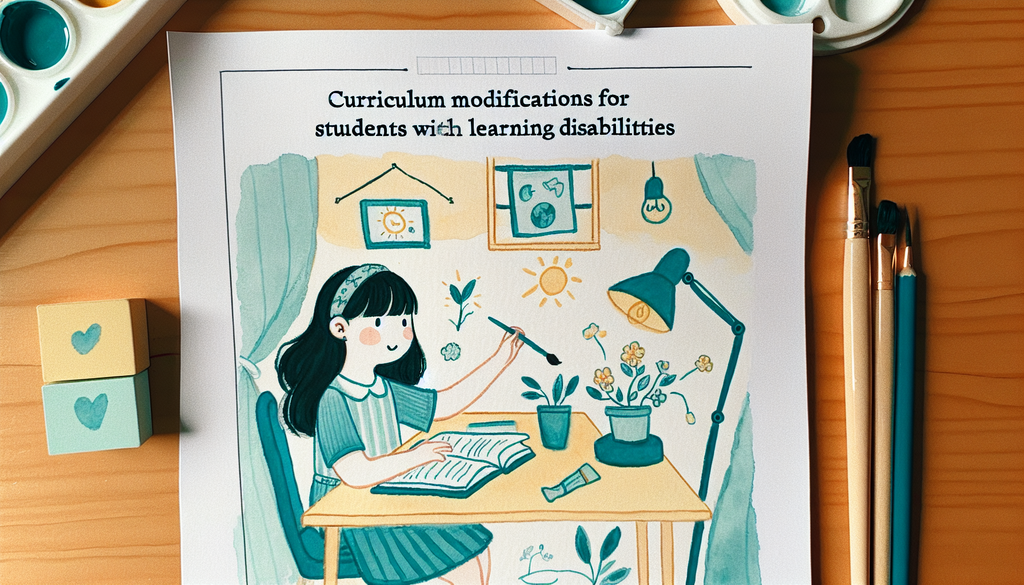Curriculum Modifications for Students with Learning Disabilities

Inclusive learning is of utmost importance when it comes to education. Every child has the right to a fair and appropriate education experience. However, for children with learning disabilities, there might be unique challenges that need to be addressed. In such situations, curriculum modifications play a vital role.
Understanding Curriculum Modifications
Though often confused with accommodations, curriculum modifications are not the same. Accommodations imply changes in how a student learns, while modifications are changes in what a student learns. Essentially, modifications are adjustments made to the curriculum content, instructional level, or performance expectations to assist students with learning disabilities.
Curriculum modification aims at reducing or eliminating the impact of the student’s disability. It enables them to succeed in the general education curriculum by altering the content or instructional level to their needs. These modifications widely vary depending on the student’s individual abilities and requirements identified through their Individualized Education Program (IEP).
Types of Curriculum Modifications
Curriculum modifications can be categorized into four main types:
-
Content Modifications: These involve altering the instructional content to match the level of the student. It could mean reducing the number of concepts taught or changing the complexity of the concepts.
-
Process Modifications: These involve tailoring the instructional methods and strategies to better suit the learning style and pace of the student. It can include using techniques like kinesthetic learning or interactive learning tools.
-
Output Modifications: These involve changing the way students are assessed. Instead of traditional written tests, students might demonstrate their understanding through oral presentations, models, or portfolios.
-
Expectation Modifications: These involve altering performance expectations to fit a student’s abilities. It can include adjusting grading criteria or allowing more time for task completion.
Implementing an Effective Curriculum Modification Plan
Here are some actionable tips for implementing an effective curriculum modification plan:
-
Know your Child’s IEP: Successful curriculum modification begins with a thorough understanding of your child’s IEP. It outlines their specific needs and sets the foundation for any curriculum changes.
-
Work with the Education Team: Collaborate with the education team, including your child’s teachers, school psychologist, and even occupational therapist if applicable. Their insights on the child’s abilities and struggles can inform the modification process significantly.
-
Set Clear, Attainable Goals: Establish clear objectives that align with your child’s abilities. Ensure these goals are not too overwhelming but keep the child challenged and engaged.
-
Regular Reviews and Adjustments: Review and adjust the modifications periodically. This ensures that the plan evolves with the child’s progress and continually meets their needs.
For more information on specific modifications and intervention strategies for students with different learning disabilities, you might want to refer to our detailed guide on Dyslexia interventions or our focus on Non-Verbal Learning Disability (NVLD).
Remember, curriculum modifications focus on offering your child a tailored education that is appropriate for their ability level. Modifications are about accepting where the child is in their learning journey and building from there. This type of inclusive learning benefits not only the child but also fosters a more compassionate and understanding classroom environment.